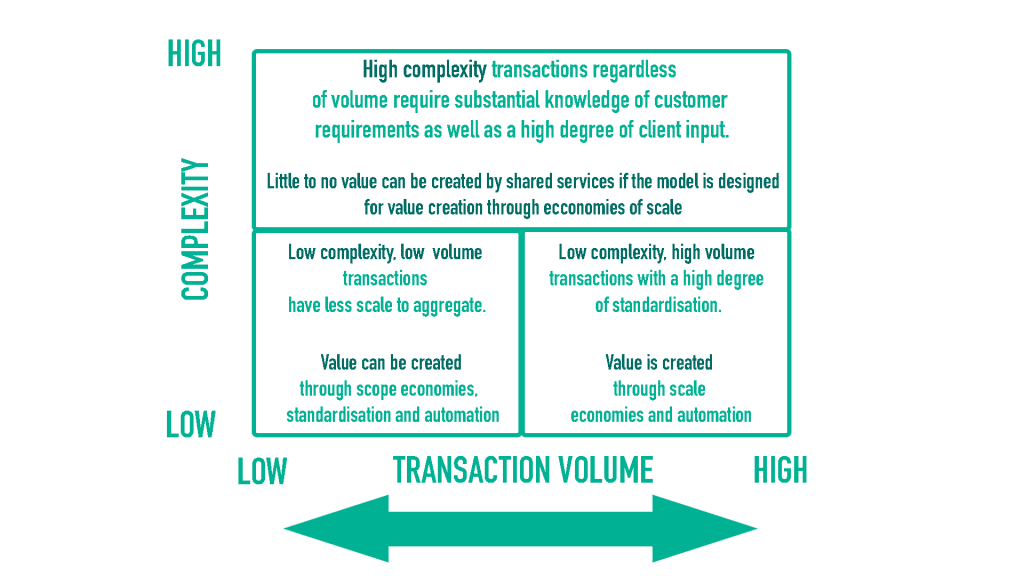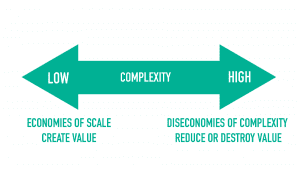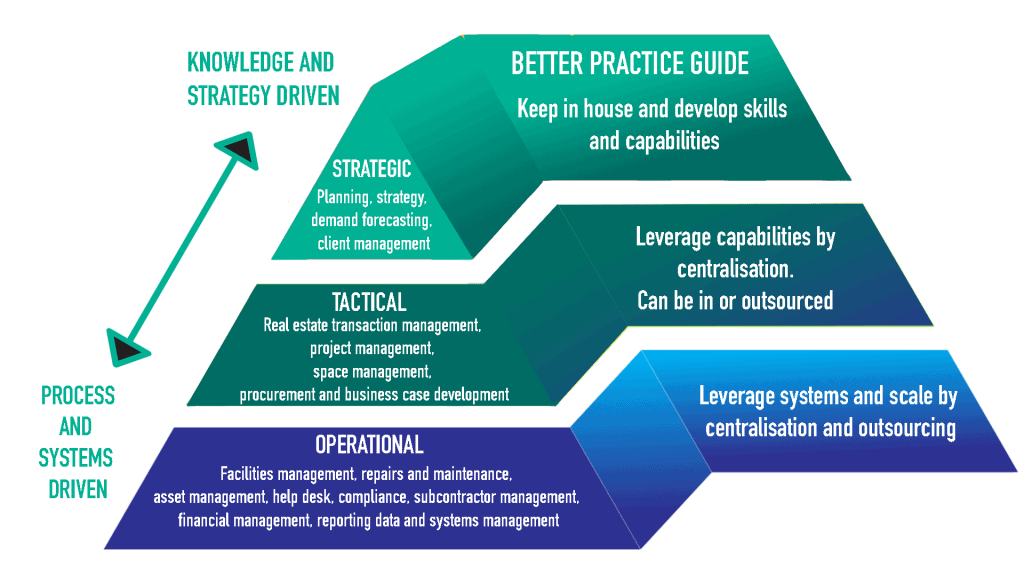How shared services for property and facilities management creates value

Shared services for property and facilities management
The delivery of support and back office services under a shared service model is nothing new. In fact, there is a whole industry created around shared services. (Check out the Shared Services and Outsourcing Network).
However shared services for property and facilities management, particularly across the public sector, is both relatively new and subject to a different set of drivers for value creation.
In this paper, learn why shared services for property and facilities is different and how to:
- choose the appropriate shared services model for your organisation
- design value creation into the model
- avoid value destruction.
Shared Services – new to Property and FM
Share services is nothing new. Shared services in corporate context is simply called centralisation. Aspects of centralisation for property and facilities, HR services, IT and procurement are all a part of good corporate design. If designed and implemented correctly these functions will add significant value to the organisation leveraging both scale and scope economies.
However, in a property and FM context the provision of services has relatively unique characteristics which are often overlooked when aggregated with finance and HR shared services models. These two characteristics are:
- locational characteristics
- contextual characteristics.
Locational characteristics refers to the fact that property and FM services are delivered to specific locations. This may seem obvious but most of the transactional services provided by finance and HR shared services are simply that, process transactions that can happen anywhere. There are no material issues to the location of where these transactions are processed except taxation and other legal jurisdictional issues.
As the provision of property and FM services are location specific, the availability of providers, access to the facilities and even issues like weather, can have a material impact on the service delivery including the cost of the service and the satisfaction of the client.
These complexities are rarely built into shared services models.
Contextual characteristics mean that the service including the time of day it occurs, who delivers it, how it is delivered and, under what conditions it is delivered can all significantly impact the cost of the service, the quality of the service and the level of customer satisfaction.
Cost, service quality and customer outcomes all depend on whether the service is:
- provided under a warranty condition or under defects liability
- delivered after hours or during hours
- delivered as a bundled or packaged service under a preventative maintenance regime, or as part of a corrective maintenance activity.
Neither of these locational or contextual issues are a factor when designing shared services for transactional process activities and as such are often overlooked in how a service model is designed.
Framing of shared services as outsourcing
When thinking about shared services we use a frame of reference similar to an outsourcing model. That is, part of your business processes are going to be undertaken by somebody outside of your business because it can be done better or cheaper or, in some other way, add value to your business.
So how is value created?
In a shared services model, there are four factors that create value:
- Reduction in transaction costs
- Increased standardisation of the service leading to an overall reduction in cost
- Aggregation of knowledge or skills under a shared service model leading to a lower cost of service delivery
- Aggregation of knowledge leading to a more strategic outcome for the organisation.
So which property and FM services are likely to create the best value through shared services?
When considering what would work best under a shared services model, we use a two-way matrix which looks at two aspects.
- Complexity – how complex the task or service is in terms of the:
- specific client knowledge required
- level of stakeholder involvement needed
- uniqueness of the service.
2. Task volume – how often the transaction occurs.
The diagram below maps the trajectory of property and facilities related services across the complexity and volume matrix.

Another way to consider this continuum is across a measure from economies of scale at the far left hand side to what we describe as diseconomies of complexity on the right. In the diagram below we have mapped traditional property services across that continuum to provide an idea of where the most value is created.

What about aggregating the knowledge required?
Value creation through knowledge aggregation provides economies through scope rather than scale.
In the model below we map out the typical property and facility management services against a continuum that assesses process and data driven transactions to knowledge driven transactions.
Services at the lower end of the pyramid create the most value because they are services that can be standardised. These services have very little subject matter or client knowledge requirements and are generally of higher volume.

Value destruction – The common traps in shared services design
In our experience there are three common pitfalls in the design and implementation of shared services models. While not all issues occur all the time, at least one of them has occurred in every shared services model that we have reviewed or been exposed to over the last 10 years.
Trap number 1 – Diseconomies of complexity
While value can be created it can equally be destroyed.
This occurs when the recipient of the service must recreate their own internal engagement model to help define scope and manage the service provided by the centralised shared service provider. They do this because of the uniqueness of their requirement, the requirements of stakeholders involved, or a lack of confidence that the centralised provider will understand the uniqueness of the client.
In this situation any value created through economies of scale is lost thought diseconomies of complexity. The complexity of the transaction now costs more than any economies of scale achieved.
Trap number 2 – Failing to provide a service
This is the most common pitfall we see in a shared service provision where the cost of the service is seen as the only measure of success.
When delivering property and facilities services that support business operations, the quality of that service and its ability to seamlessly integrate with day to day business operations adds significantly more value than the simple cost of processing a transaction. This factor is often missed, and if not missed, is often not measured within shared services arrangements.
This often occurs where the only measure of success for shared service is a cost based one and where aggregation for scale is the only framework used.
Trap number 3 – Losing sight of where value is created
The third most common mistake we see is organisations sticking to a shared services model when it is failing to create value.
In an outsourcing context, corporates will tune and adjust their shared services to meet the changing needs of business. As the business becomes more complex; as it grows in scale or market share or, as it restructures and defines new strategic goals, the shared services model is adjusted.
Too often we see a dogmatic approach to shared services design where one size fits all and is set and forgotten.
This is a common mistake where organisations do not consider the ongoing requirement to adjust and reframe shared services based on where value can and cannot be created.
Conclusion
Shared services models are being used more often as organisations try to leverage scale, standardise service delivery and reduce cost.
Shared services in a corporate context can create considerable value. However, the public sector is different. The complexities of ministerial responsibilities, machinery of government changes and the ongoing requirement to meet stakeholder expectations can make shared services design and implementation significantly more complex.
Value can be created just as much as value can be destroyed in a shared services model where economies of scale are considered the be all and end all. For property and facilities management, a design including an understanding of complexity and transaction volume is essential.
Understanding where value is created and having a process for regularly reviewing the creation of value, the level of service and adjusting the shared services model to meet changing needs will lead to much better business outcomes.
If you would like to know more, see below for The three keys to effective corporate real estate management and cost control.








 We are all about sharing our expertise to help you and your organisation be the best it can be.
We are all about sharing our expertise to help you and your organisation be the best it can be.